An executive committee recalibration
The role of the executive committee has changed dramatically over the past three years.
Our boards of directors and officers are the voices and the faces of our organizations. They are those we turn to as leaders who tell the story of the mission, inspire future leaders, and spotlight key progress and milestones on an organization's journey – building a sense of belonging among members. This is not something only done at quarterly board meetings, it is an ongoing effort.
For most organizations, in addition to the board of directors, there is an executive committee. While nuanced, in most cases, the executive committee consists of the officers and the CEO. This small group is often charged to meet more frequently than the board of directors to conduct the business of the organization on behalf of the board between board meetings to ensure activities advancing strategic goals progress when decisions and input are needed from volunteer leaders. With this charge comes an expectation and trust that, when issues of a significant nature arise, the executive committee recognizes when they are being presented with something that goes beyond their assigned role. In these instances, they can decide if the issue demands a quick call for a meeting of the board or deliberation and decision at the next board meeting.
The challenge we currently face is one of leaders who have just come out of a period of crisis response where executive committees have been expected to engage in a different type of rapid, frequent decision making for the organization.
Because cascading societal disruption has caused organizations to be in crisis response mode, executive committees have taken on responsibilities which in ‘normal’ times, would have been within the purview of the board or staff. In a passing crisis, this shift would absolutely be expected, and normalcy would quickly return. However, in a prolonged period – such as over years, crisis actions become new norms and habits which can be detrimental to the organization.
Many associations now find themselves with an executive committee whose intent and actions are out of alignment with their role in maintaining forward momentum in increments between board meetings. For some organizations, it is resulting in the executive committee becoming a shadow board of directors, making decisions that should be sent to the full board, or coming to the board having already had a discussion with a decision ready for a rubber stamp. In other circumstances, the executive committee is engaging in tactical decision-making, shifting the balance of the board-staff partnership in unhealthy ways.
It is important for these organizations to make a correction now to ensure the balance between board, executive committee, and staff is restored. When out of balance, staff feel they are unable to innovate and take action based on their expertise without constant volunteer checks and approvals. The Board can feel they have been placed in the role of endorsing the decisions of the executive committee instead of engaging in deliberations or decision-making themselves. The board should again be imbued with the power to strategically guide and advance the mission of the organization and the professional staff should be respected and empowered to take action in their areas of expertise. We’ll talk more about the staff component of this in [part 2 – coming soon] of this series.
To succeed in advancing the mission of the organization, it is time to take a step back and assess the purpose of the executive committee. Not for a few years ago, not for today, instead, for the future.
The executive committee should be in service to the board, staff, and membership, enabling them to fulfill their roles as strategic advisors and implementers. They should have the space to identify and lift up the voices of members, recognizing when voices or perspectives are missing, and elevating individuals whose voices need to be heard (instead of speaking for those individuals).
By recognizing the needed shift, executive committees can take a fresh look at what their role should be and how they define success for the precious time they spend together.
How is your executive committee spending their time?
